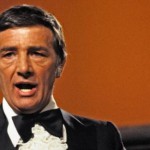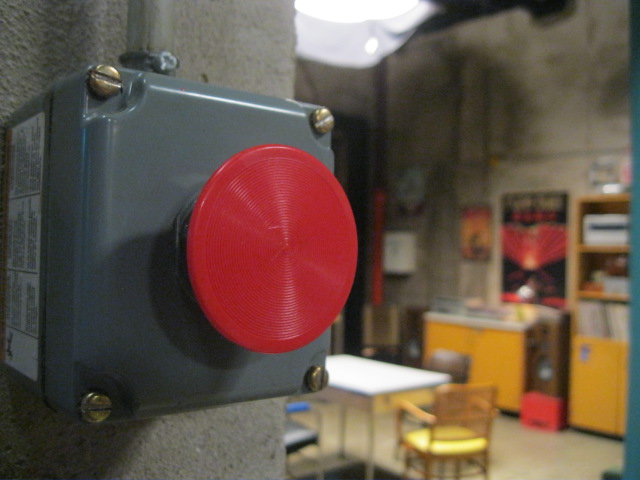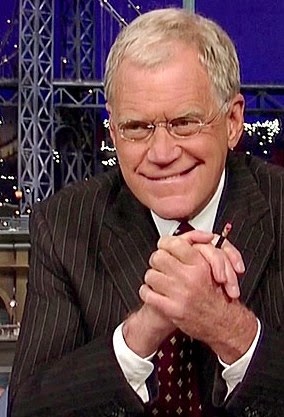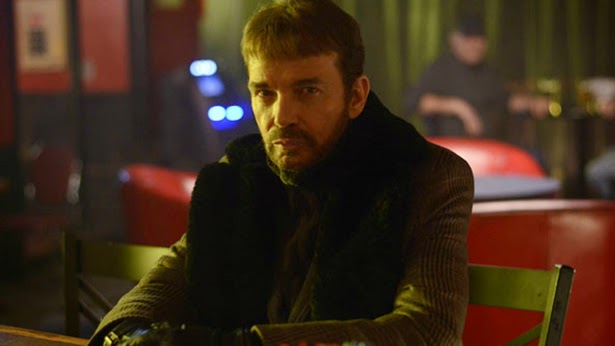 |
| Mainse poses with a statue of Jesus washing one of the disciples’ feet in the foyer of his Crossroads HQ |
Although we here at TV Feeds My Family tend to deify people like Leslie Moonves or Mark Burnett, television is by in large a Godless business. Indeed, spend a few minutes on E! or any of a dozen specialty channels and one might conclude it is Satan’s playground. Still, anyone who can last 50 years in this industry deserves respect and can even restore faith.
Such a man is David Mainse, the founder of 100 Huntley Street and Crossroads Television System (CTS). This month he marks 50 years since he first took to the airways.
I went out to Mainse’s sprawling broadcast/ministry centre off the QEW in Burlington, Ont., last week to interview the 76-year-old televangelist, still spry and passionate about his life’s work despite his on-going battle with leukemia.
I was impressed with Mainse’s knowledge of history, especially–and this wasn’t surprising–Bible history. CTS has a full scale replica of an Old Testament Tabernacle set up in a giant sand pit at the Crossroads Centre, open to the public through Sept. 3. It is all very Indiana Jones, what with its golden arc of the covenant. If it doesn’t draw, the attraction could easily be made over into a cool beach volleyball court, I’m thinkin’.
What surprised me was Mainse’s grasp of television history. I asked if he was at all influenced by the ’50s phenom Bishop Fulton J. Sheen. Sheen enjoyed high ratings with his weekly Catholic sermon Life is Worth Living, which aired on the Du Mont network. In the early ’50s, it was on opposite Milton Berle, who used to crack that he and Sheen worked for the same sponsor–“Sky Chief.” Later, when Sheen’s ratings eclipsed Berle’s, the comedian said it was because the bishop had better writers–Mathew, Mark, Luke and John.
Mainse recalled that Sheen’s sin was becoming more popular that his earthly boss–the Pope. It was no accident, says Mainse, that Sheen was transferred to Rochester, far from his New York studio, derailing his TV career.
Mainse told me something I never knew–that religious warfare in Ontario played a role in the formation of the CBC. “They were created because the Roman Catholics, Jarvis Street Baptists and Jehovah Witnesses all had radio programs in the ‘20s, and they were always saying nasty things about each other,” insists Mainse. The name calling gave the federal government the political will to shut them down and create the CBC, which Mainse maintains was “created to take care of the religious needs of Canadians. Unquote.”
 |
| Early TV artifacts near the entrance at Crossroads |
CBC did carry some religious programming over the years. The Sunday morning series Hymn Sing and Man Alive would both qualify, I think. Today the closest the public network comes to religion might be Don Cherry’s sermons on Coach’s Corner.
Another surprising thing Mainse told me is how his CTS network–which programs a mix of spiritual and ministerial programming and family sitcoms–landed the cushy channel 9 slot in the GTA. Seems Ted Rogers mother’s favourite show was 100 Huntley Street. Rogers himself called up Mainse to tell him he was getting the must carry slot across his cable empire–and that Mainse could thank Rogers’ mom.
Today, Rogers corporate headquarters sits on lands surrounding Mainse’s old Huntley Street broadcast address. Coincidence? The Lord only knows.
Read more with Mainse in this story I wrote for The Toronto Star.







